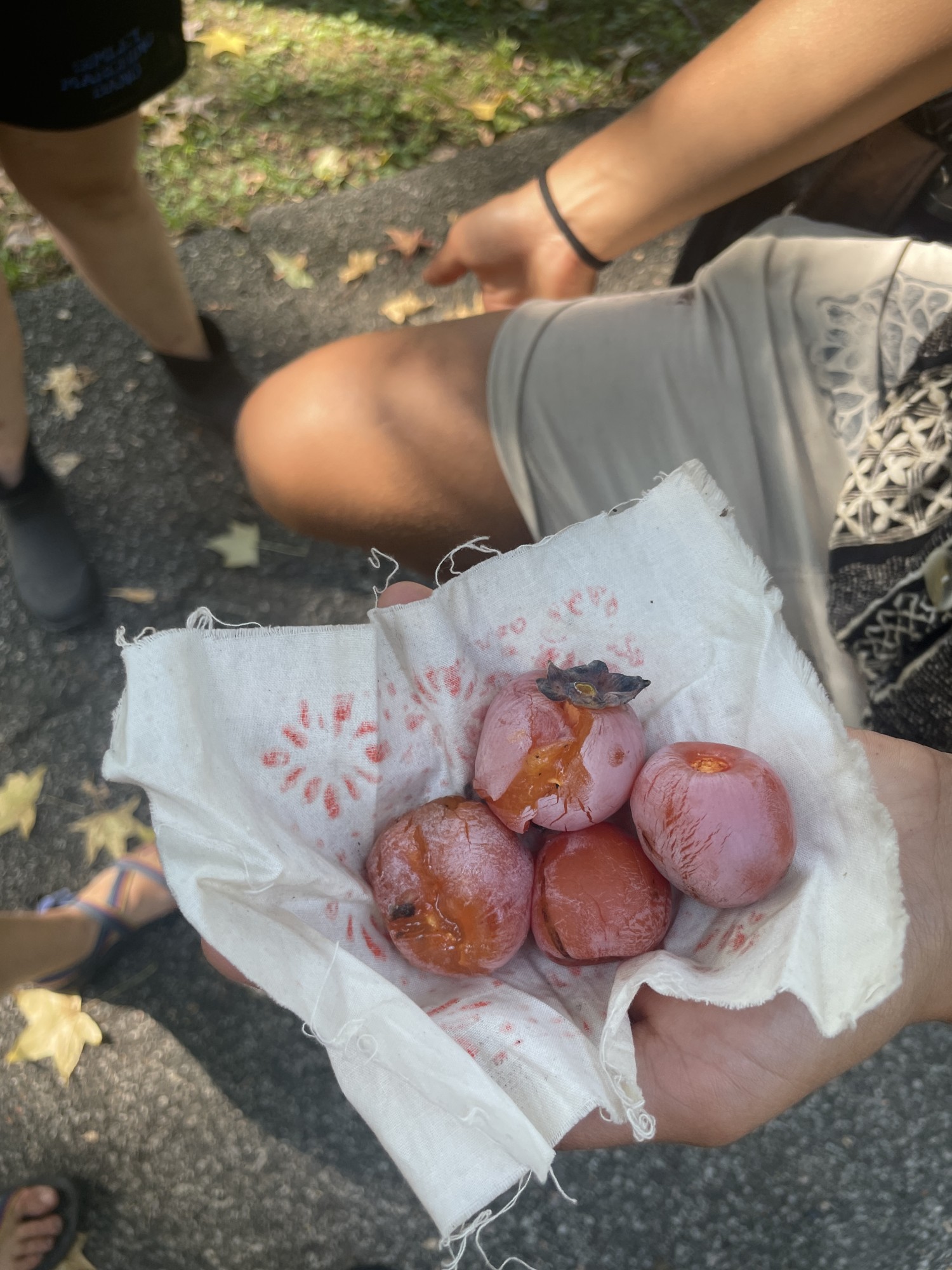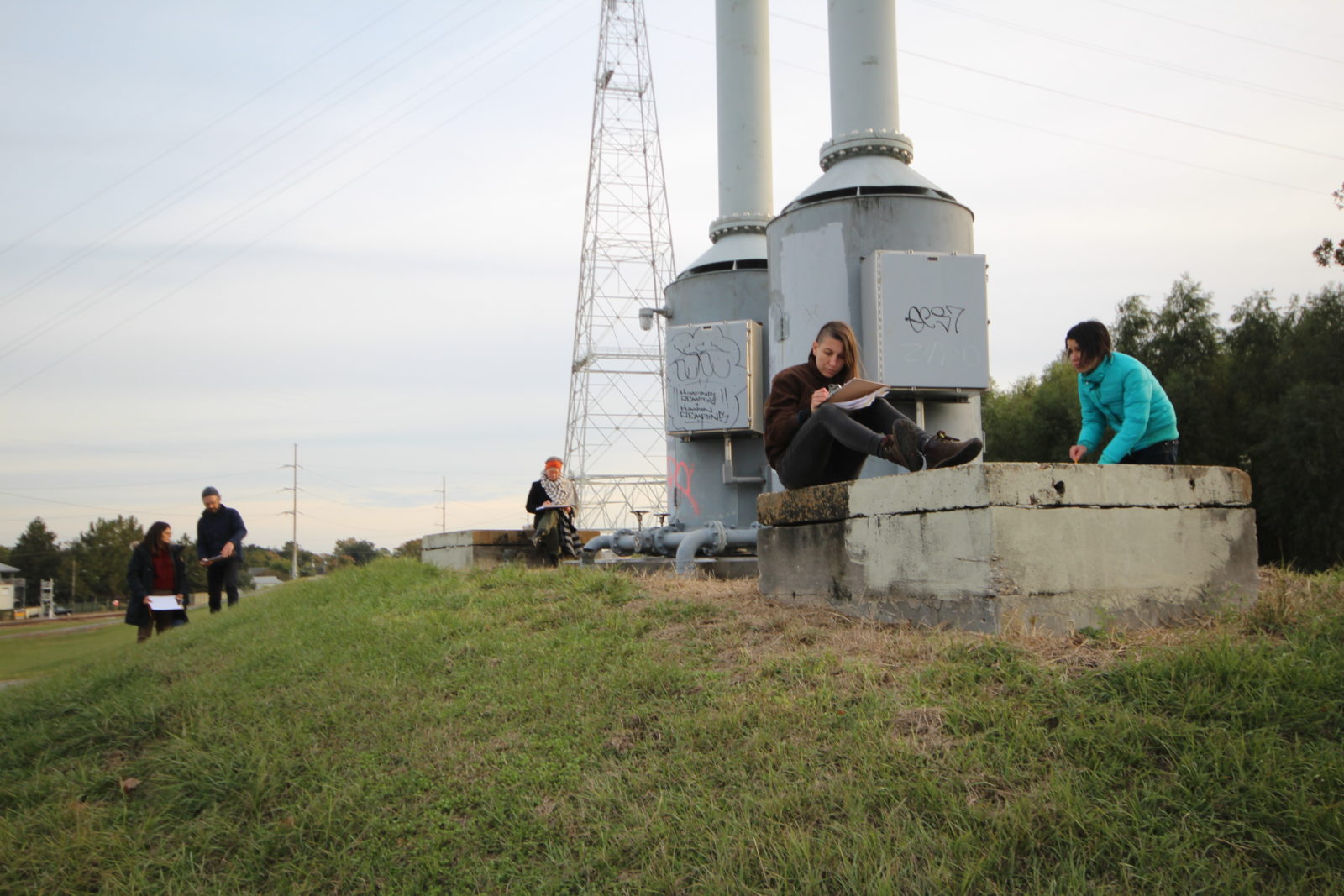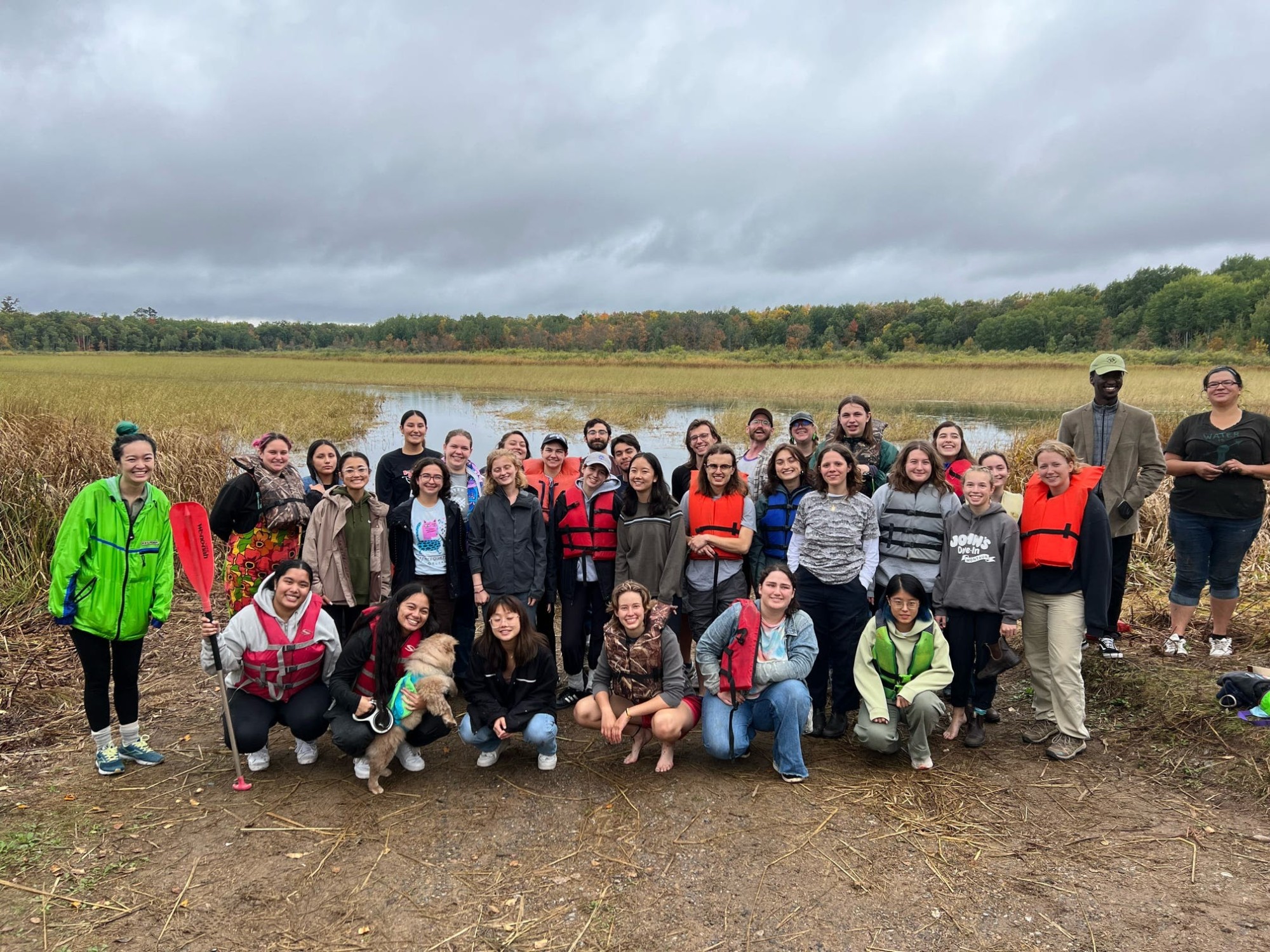This recipe is a part of the Mississippi Mud Book of Recipes.
An empty marble pedestal sleeps conspicuously at the entrance to Southwest St. Louis's Tower Grove Park. Flanking it are enormous green sycamore, oak, and sweet gum, a small sampling of the arboretum that surrounds us. We met Lynn Peemoeller in the shade of these trees, near the empty marble block, a welcome refuge from the hot day. Peemoeller is a food systems planner, working as a facilitator between St. Louis and farmers with the goal of making food more accessible to those in cities and markets a pragmatic choice for small farmers around the midwest. She lives in one of the tall brick townhouses that borders the park, and remembers the morning when she noticed that the Christopher Columbus statue had been removed from the marble pedestal–she was walking her dog, "now my kids climb all over the block…pretending to be statues themselves"
About 400 feet from this false monument is a trickling stream bed, filled with round river rocks baking in one of the rare sunny patches of this park. Peemoeller explains that this creek was recently "daylighted" by the Osage Tribal Nation Historic Preservation Office after a century of subsurface flow. It's been named Nee Kee Nee, or "revived water" in Osage, and was used as a gathering place for the Osage people in the midst of their former hunting grounds. The dedication ceremony in November of 2022 included members of the Osage nation and city engineers and officials. Tower Grove Park is one of the only parks managed by an independent Board of Commissioners, and the removal of the Columbus statue and daylighting of Nee Kee Nee are related efforts started in collaboration with the Osage nation. Both are significant in a city known for its monuments to European nostalgia exemplified by the St. Louis white capitalist elite throughout the history of the city.
The treaties of 1808 and 1825, along with the convincing of the Superintendent of Indian Affairs William Clark, forced the Osage to the plains via the Trail of Tears. The United States Government sold the Tower Grove Park land to Henry Shaw, an amateur botanist and slave owner who had secured his fortune merchanting iron goods to settlers traveling westward on the Missouri River. A retired Shaw sold the land back to the city in 1866 with the requirement that it "shall be used as a park forever," and that an "annual appropriation" be made by the city "for its maintenance." He had already established the Missouri Botanical Gardens on the park's grounds. Tower Grove Park was made to be controlled and monitored, to serve as a monument to the exotic riches of a city that has done nothing but take. Still in the midst of this park, by the banks of Nee Kee Nee, two native trees persist: an Osage orange and a wild persimmon.
Wild persimmon is unlike its domesticated varieties that are more commonly known. It is a squishy orange ball when ripe, and the whole fruit is edible (minus its distinctive green crown). The so-called oriental persimmon, of the varietal Fuyu, is common on the Pacific Coast of the United States and originated in Japan. It has a tough skin that is inedible raw. The name persimmon is of Algonquin origin, and the fruit have been a staple of Indigenous groups all along the Mississippi River. When we visited Andeab and Mila Berhane's Greenhand Nursery outside of Baton Rouge, Louisiana, an enormous wild persimmon tree greeted us as we entered their driveway.

Before colonization, southern Missouri was a rich repository of persimmons, paw paws, mushrooms, and wild grapes. These fruits were so hearty that Missouri wild grapes were spliced with French grape varietals to save the French grapes from blight in the 1800s. Today, the greatest abundance of wild persimmon trees in the world is in the Mississippi River Valley, and Native populations have used the fruit, bark, and leaves of persimmon trees for medicine and food. Early African American populations would use persimmons to make cakes, candy, and pudding, which is a staple on many Midwestern and Southern tables. Cherokee would chew the bark as a gastrointestinal aid, and prepare it in steam baths for indigestion. Many indigenous groups–including Rappahannock, Comanche, and Cherokee–would use the inner bark as a wash for hemorrhoids, thrash, and sore throats (if the inner bark is from the north side of the tree). The Rappahannock would also roll the fruits in corn meal, brew in water, drain, and bake and mix with hot water to make a beer.
Rice, pecans, soybeans and corn have overshadowed the native edible fruits grown in Southern Missouri in the 20th century. As Peemoeller tells us as we walk through the Tower Grove Park Farmer's Market–"truth is on the price tag here…cheap food is cheap because it's subsidized." I didn't see wild persimmons utilized in the farmers market, granted they don't travel well, but to make this market lucrative to farmers, they need to follow the price tag. Peemoeller's work focuses on the question "how will we feed ourselves in the future?" She studies the complex role of food in urban systems, and the size and business of this farmer's market speaks to how engagement with food is monumentally important in a city like St. Louis is surrounded by some of the most fertile agricultural land in the world. For rural farmers, farmer's markets are not an economic boon, but traveling to town to sell at a farmer's market is a way of selling direct to consumers, avoiding intermediary costs from packers and food agents. But for these often small, family farms, the amount of work to pack and travel to a park that was once lush farming and hunting lands for the Osage is not the best possible sale option.
The unassuming marble block at the entrance to the park is only a small testament to what once was considered monumental in the creation of this city. Now, there is a creek and native plant garden that not only serves as a monument to the Osage, but to the scarcity of shade and greenery amidst this city, especially in the redlined neighborhoods north of the infamous Delmar Divide.
Daylighting is not only an effort of "rewilding," it's also an act of uncovering truth–usually that has been long hidden by those who wish to control a place or population. As Andrea Hunter, director of the Osage Tribal Nation Historic Preservation Office said, "We [the Osage] have a longtime history of being here and taking care of the landscape, taking care of the plants, the animals in the water, and that was a mission that we held in common with the Tower Grove Parks folks." Keeping in mind the ostentatious Victorian architecture of the park's gazebos and arcades, the park is beginning to return to a less European-idyll state, and asking questions like "what kinds of plants are going to grow along this streambed?" and "how do we show the history of this land through natural processes?" I'm often discouraged by daylighting efforts that highlight symbolism over consideration of use. A monument is one thing, but how does that monument interact with the world around it? Is that interaction practical to those who have been oppressed or removed? Is it the job of city and park officials to shepard land that isn't theirs? This stream shows an acknowledgement of land stewardship that is essential to the Osage–and Indigenous–lifeway.
Joe made this persimmon pudding in a dutch oven at our little KOA campsite outside of St. Louis. After heating the coals for an hour or so, he placed the dutch oven directly onto the fire, scooping coals from the fire and placing them on top of the oven. Cooking directly over a fire connects the cook with the alchemy of cooking. Anybody can turn on a stove or an oven, but the interplay of heat energy and knowledge of the ingredients speaks to a deep-seated, ancestral intuition. Persimmon pudding is one thing that can be easily made over an open flame, approaching the bruisable fruit with care as we consider how Indigenous and Black folk have used this fruit as a dessert or treat or ceremony. A fire is a memorial. For the Ojibwe, the fire is called grandfather, built in the center of a group to allow for stories and food on any cold night. We daylighted the hallowed grounds with the delicate art of dessert–in our case, persimmon pudding.
Professor Joe Underhill's Prodigious Persimmon Puddin' Cake:
Joe notes that this is a derivation of his Auntie Betty's holiday time persimmon bread–made with brandy, melted butter, and ripe fuyu or hachiya persimmons (the author grew up eating the latter in Northern California from a tree propagated by his grandfather in his parents front yard).
This persimmon "pudding" looked more like bread, but cooked like a sheet cake. It wasn't pudding like you make from a package (milk, eggs, chocolate, etc.) but a moist cake.
We didn't have all the ingredients, so Joe winged it.
He took the flesh off the pits of the wild persimmon (they are mostly pits, so this was a messy procedure). There wasn't much pulp, so Joe added some fig preserves that he had bought from a stand at the Tower Grove Park farmer's market, along with eggs, sugar, melted butter, enough flour to make a very loose batter, and some baking powder and baking soda as leavening.
We cooked it in the dutch oven until firm to the touch. When it springs back in the middle after being pushed down with your finger, it is finished. Joe says that the trick to cooking over the fire was getting the right amount of heat–not too much or too little. You need a good supply of hot coals, and a way to move them around so that you can regulate the heat by piling coals on the lid of the dutch oven. It's a delicate process, he says, and he's still working on improving this technique while baking things at camp. Thank you, Joe!
Peemoeller, L. (2019). Food Systems Planning. https://www.foodsystemsplanning.com/about/
Perry, Myra Jean, 1975, Food Use of 'Wild' Plants by Cherokee Indians, The University of Tennessee, M.S. Thesis, page 38
Schremp Hahn, Valerie. “A Stream Ran Underground in Tower Grove Park for 100 Years, Now It’s Seen Again.” St. Louis Post-Dispatch, 3 Nov. 2022.
Slow Food Foundation. “American Wild Persimmon –Arca Del Gusto.” 8 Dec. 2018, www.fondazioneslowfood.com/en/ark-of-taste-slow-food/american-persimmon-2/.
Speck, Frank G., R.B. Hassrick and E.S. Carpenter, 1942, Rappahannock Herbals, Folk-Lore and Science of Cures, Proceedings of the Delaware County Institute of Science 10:7-55., page 25
Tower Grove Park. “Our History.” www.towergrovepark.org/our-history-1. Accessed 9 Nov. 2023.

